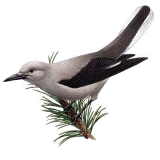Papers in the Biological Sciences
Date of this Version
2002
Abstract
Three avian species, a seed-caching corvid (Clark’s nutcrackers; Nucifraga columbiana), a non-seed-caching corvid (jackdaws; Corvus monedula), and a non-seed-caching columbid (pigeons; Columba livia), were tested for ability to learn to find a goal halfway between 2 landmarks when distance between the landmarks varied during training. All 3 species learned, but jackdaws took much longer than either pigeons or nutcrackers. The nutcrackers searched more accurately than either pigeons or jackdaws. Both nutcrackers and pigeons showed good transfer to novel landmark arrays in which interlandmark distances were novel, but inconclusive results were obtained from jackdaws. Species differences in this spatial task appear quantitative rather than qualitative and are associated with differences in natural history rather than phylogeny.


Comments
Published in Journal of Comparative Psychology 116:4 (2002), pp. 350-356; doi: 10.1037/0735-7036.116.4 Copyright © 2002 American Psychological Association. Used by permission. “This article may not exactly replicate the final version published in the APA journal. It is not the copy of record.” http://www.apa.org/journals/jcp/